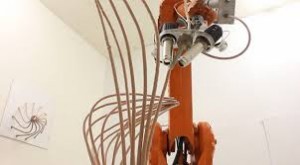
Never Never land (Andres Jaque Architects):
The Never land house is located in Ibiza island in Spain. The design of the house and landscape was produced taking into consideration the natural surroundings of the island, the European building standards and characteristics, the fact that Ibiza is a party city.
The elevations of the building were deigned to allow for the maintenance of ground permeability and the existing run-off. The arrangement of the spaces allowed for preserving all of the existing trees, hence the continuity of mechanical soil conservation and the habitat constituted by the pine tree tops, or the use of a concrete drum to house all of the systems which might call accidental spills into the subsoil. The logics driving the design are positional and metaphorical: Positional which changed the perception of architecture in relation to the trees, furthermore using the trees to orientate the movement in the space. The design also introduced order in the k-otic nature even if the order is not in order. Metaphorical: Employing the difference between tree branches to construct the architecture, due to the fact that it caters to the nature around it as well as maintaining the interactive elements affecting the indoors environmental quality.
Form and Function Follow Climate (Philippe Rahm):
The author discusses the way current sustainable development policies act as major doctrines influencing architectural design. Philppe advocates that the capacity of architecture not to be tied to function; he compares the precedent form finding techniques that are widely used in architecture (form follows function, function follows form),which gave rise to a system that is rigid in terms of structure yet flexible in terms of program or function. Furthermore, the author then proposes an approach to find a relationship between form, function, and climate, which reverses the traditional approach in order to achieve a design in which function and form can emerge in response to climate.
Manufacturing of Material Effects:
Manufacturing of material effects is a powerful contemporary actualization of the potentialities founded by highly collaborative, highly integrated design, engineering, fabrication, and construction knowledge. The emerging, technologically-enabled transformation of the building industry in the “digital” age has led to a much greater integration of “mechanical” age processes and techniques into conceptual building design.
I am interested in integrating material sciences and CNC tools to open up for more complex architectural design possibilities and fabrication capabilities in building construction.
By optimizing/ manipulating material variables in composites for local performance criteria, entirely new material (materials
that change their properties dynamically in direct response to external and internal stimuli, such as
light, heat and mechanical stresses) and tectonic possibilities can emerge.
Sources:
http://thecreatorsproject.vice.com/blog/3-ways-anti-gravity-robot-printing-can-better-the-arts
